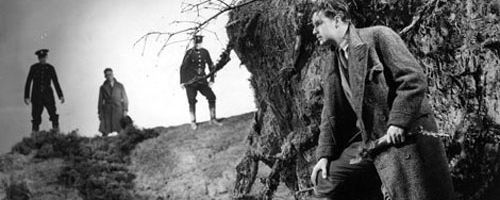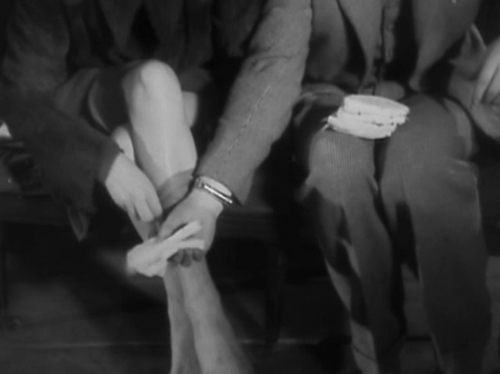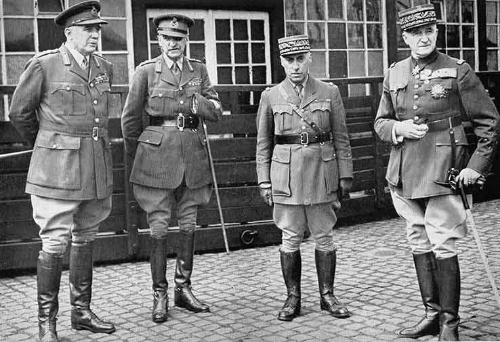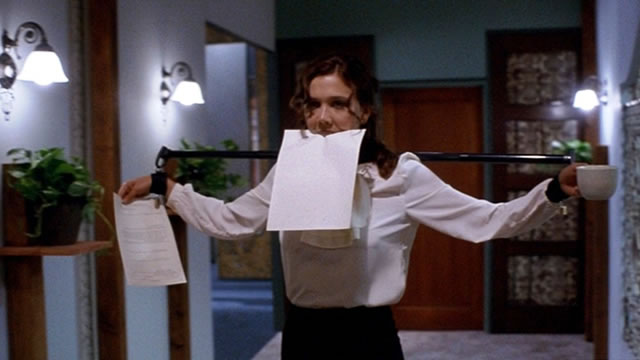 The
39 Steps by John
Buchan
The
39 Steps by John
BuchanMy rating: 2 of 5 stars
”I know what it is to feel lonely and helpless and to have the whole world against me, and those are things that no men or women ought to feel.” Richard Hanney in The 39 Steps.

In the edition that I read Toby Buchan, grandson of John Buchan, wrote an introduction that was almost an apology. About half way through the book I understood the need for an apology. The book pales in comparison to the movie. The writing is jaunty and for a while sustains the reader, but soon I was searching desperately for the dialogue or the scenes that I loved most about the movie.
They are not there.
Charles Bennett adapted the novel to the screen and Ian Hay wrote the dialogue. They took a Buchan framework and turned it into an entertaining and exciting movie. I recently rewatched The 39 Steps (1935) during one of the Hitchcock weekends on TCM which made me that much more interested in reading the book that inspired the movie. Most of the book is one long chase scene involving motor cars, planes, bicycles, and leg races over hill and dale. There are numerous disguises, car crashes, and one rather large explosion. No overtones of sexual attraction or for that matter... women. It is a boy’s adventure played by a 37 year old man who has made his fortune in Rhodesia and found himself in dire circumstances when he decides to see London.
Indulge me while I plug the movie.
I had three favorite scenes from the movie that I hoped would be in the book or at least that there would be other memorable scenes that Bennett and Hay decided not to use. None of these scenes are in the book unfortunately.
The scene with the farmer’s wife that the writers and Hitchcock managed to convey to the watcher in so brief a span of time how lonely and desperate her life is married to a jealous, older, crusty man with no hope of respite. When the Richard Hanney character played by Robert Donat kisses her as he scrambles out a back door with her husband’s coat and hat I felt like cheering. That kiss, so easy to give, might be the very thing she needs to sustain herself or to break free.
The scene where Richard Hanney has made it to what he feels is a safe haven only to discover that his benefactor is the very man he has been trying to thwart. (view spoiler)
In the course of the movie Richard Haney ends up cuffed to a hostile female named Pamela played by Madeleine Carroll. They escape from police custody and end up wet and very annoyed with each other in a room over a bar. They have the police and a pair of henchmen looking for them. In the room she sits down to peel her wet stockings off her legs and because he is cuffed to her his hand travels down each leg with her hands. It is one of the most sensual, sexy scenes in movie history and no one is naked.

Toby Buchan did provide me with a tidbit of information in his introduction to the book that was interesting. The character of Richard Hanney was based off the exploits of Lord Edmund Ironside, 1st Baron Ironside who had a long distinguished British military career. He commanded forces in WWI and WWII ending his career as a Field Marshal. John Buchan when he was writing this book in 1914 was only aware of Edmund “Tiny” Ironside’s exploits during the Boer War.
At the end of the war, he was part of the small force which escorted Jan Smuts to the peace negotiations. He then disguised himself as an Afrikaans-speaking Boer, and took a job as a wagon driver working for the German colonial forces in South West Africa. This intelligence work ended unsuccessfully, however; he was identified, and escaped shortly before being caught. This escapade later led to claims that he was the model for Richard Hannay, a character in the novels of John Buchan; it is interesting to note that Ironside himself enjoyed these novels, reading Mr Standfast in the implausibly romantic setting of the passenger seat of an open-cockpit biplane flying from Iraq to Persia. Wikipedia

You can probably guess which one is Edmund “Tiny” Ironside.
I prefer my armchair traveling where I can experience escaping captivity or flying in an open-cockpit biplane from Iraq to Persia from the safety of my oversized leather reading chair, but it does make me feel like my life is...well...a bit pedestrian.
My advice is to skip the book and go watch the movie.
If you wish to see more of my most recent book and movie reviews, visit https://www.jeffreykeeten.com
I also have a Facebook blogger page at:https://www.facebook.com/JeffreyKeeten</["br"]></["br"]></["br"]></["br"]></["br"]></["br"]></["br"]></["br"]></["br"]></["br"]></["br"]></["br"]></["br"]></["br"]></["br"]></["br"]></["br"]></["br"]></["br"]></["br"]></["br"]></["br"]></["br"]></["br"]></["br"]></["br"]></["br"]></["br"]></["br"]></["br"]></["br"]></["br"]></["br"]></["br"]>
View all my reviews






















 RSS Feed
RSS Feed